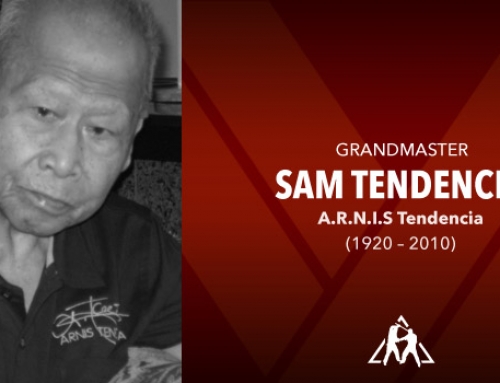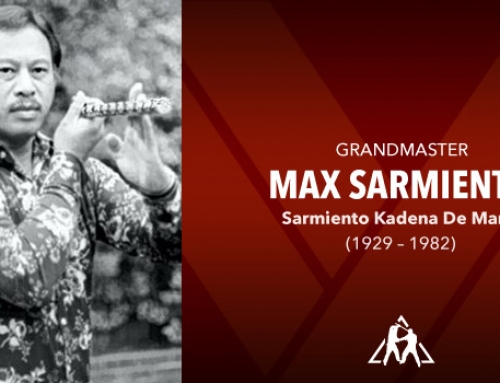Grandmaster Floro Villabrille is the undefeated champion of countless Kali and Eskrima stick fighting death-matches in the Philippines, Australia and Hawaii. In the 1930’s, Kali and Eskrima stick fighting matches were full-contact bouts where the combatants were not aided by the use of body armor, pads or headgear.
Combatants used the stick in the right hand and punched with the left hand. In close quarters, grappling, sweeps and throws were used. It was similar to the no holds barred fights of today except that victory was only declared when one of the combatants was either slain or demobilized.
Floro Villabrille was born February 18, 1912 in Cebu, Philippines. He began his martial arts training at age 14, studying Eskrima from his uncles and kung fu from his grandfather.
In his hunger for more knowledge, he traveled the entire Philippines studying the many forms of Filipino martial arts from various masters. His three most influential instructors were his uncle, Leoncio Villagano, Master Pio from Masbate Isles, and Princess Josephina from Gandara, Samar.
His favorite instructor was Princess Josephina, who was the blind daughter of a village chieftain of Gandara on the island of Samar. When Villabrille first arrived on the island, he wasn’t immediately taught Kali.
Only after passing a series of initiations that displayed his loyalty and sincerity to learning the art, Villabrille was assigned to the chieftain’s daughter. At first thought, Villabrille was insulted that the chieftain assigned his blind daughter to teach him, but his resentment quickly turned to respect.
Blind since birth, Josephina developed an extraordinary sixth sense that Villabrille said allowed her to feel what direction and angle the strikes were coming from. Villabrille was amazed by her prowess and lived on the island for 2 years learning under her direct tutelage.
By the age of 17, he was fighting in death-matches. July 4, 1933 was Villabrille’s last fight in the Philippines. His opponent was Elario Eran, a Moro Datu (Prince) from the island of Mindanao. Elario was an expert in Silat-Kuntao; another form of Indonesian/Filipino martial art.
People warned Villabrille that the Moro Prince was quick and better than him and suggested that he cancel out of the fight, but he ignored the pleas and refused to bow out. At stake was the National Grand Championship of the Philippines. According to Villabrille, the Moro Prince was highly skilled and they traded blow for blow until the 3rd round when Villabrille felt a hit bounce off his skull.
At the same time, Villabrille’s bahi stick struck Eran on the neck causing instant death. At the end of the bout, then U.S Governor-General Frank Murphy of the Philippines presented Villabrille with a certificate making him Philippines’ Grandmaster of Martial Arts. That same year, he stowed away on a ship to Oahu, Hawaii, later settling in Kauai, Hawaii.
Villabrille fought several more matches in Hawaii. In 1948, he fought his last match and shortly after, the death-matches were banned. Villabrille pooled his knowledge of the various styles in the Philippines and along with his combat experience in the ring developed his own system of combat known and the Villabrille System of Kali.
His foremost student and personally chosen successor, Grandmaster Ben Largusa systemized and broke down Villabrille’s System and put into place the theories philosophies that complement the art. Today, the art is known as the Villabrille-Largusa Kali System.
In some parts of the Philippines, Grandmaster Villabrille is considered a national hero. At the municipal museum on Mactan Island, Cebu, Philippines, Villabrille’s original certificate from Governor-General Frank Murphy hangs next to a statue of Lapu Lapu, the man who is credited for killing Magellan and stopping the Spanish invasion.
In 1992, Grandmaster Villabrille passed away at the age of 79. His wife Trining, and their three sons, Kenneth, Floro Jr. and Ralph survive him.





















